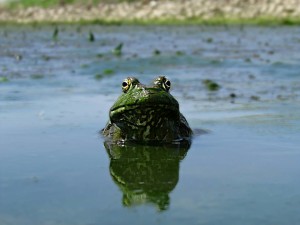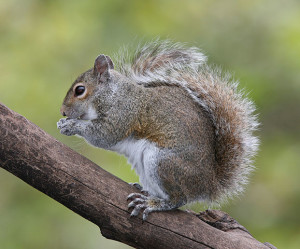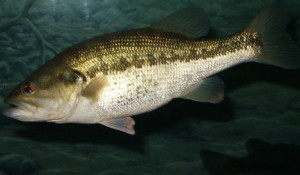Although the serious consequences caused by invasive species reaching our shores have received considerable attention, the problems caused when U.S. species land in other countries has not. Exported species have caused extensive damage in other nations, but little progress has been made toward creating policy both international and domestic to mitigate the exportation of potentially invasive species. Today, we continue to send species, intentionally and unintentionally, from the United States to other nations. These species can be transported by air, land, and sea through tourism, military operations, trade, development assistance projects, industry expansion, and other means. Here are three common native species we all know and love, which have become invasive species in other parts of the world.
North American Bullfrog

Who doesn’t love to hear a bullfrog? The North American bullfrog (Rana catesbeiana) is native to the central and eastern United States and Canada. They have been introduced to the western United States and Canada, Mexico and the Caribbean, South America, Europe, and Asia. It is cultivated for food (aquaculture), but has also been widely distributed via the aquarium trade. Adult bullfrogs are voracious predators of aquatic, terrestrial, and flying invertebrates and vertebrates.
Eastern Gray Squirrel

The Eastern gray squirrel was imported as a pet to England, Italy, and South Africa and is expected to spread through Europe and Asia. Population expansion in the U.K. and Italy has caused the local extinction of the native red squirrel, which is smaller and less aggressive than its American cousin. It causes damage to woodland through bark stripping activity and spreading parapoxvirus. Eastern gray squirrels thrive in forests and human-dominated habitats such as cities, suburbs, and farms.
Largemouth Bass

What’s better than fishing for largemouth bass on a quiet summer evening? Its good taste and appealing sporting quality have led to the largemouth bass being widely introduced throughout the world. It is a voracious, carnivorous, solitary, ambush predator that feeds both day and night. Its diet includes other fish, amphibians, insects, and any small living animal or bird that falls into the water. Largely because of the male’s care in building and guarding nests, many eggs survive, and a few adult bass can quickly populate new waters.
